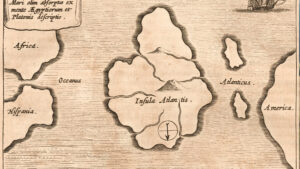Have you heard the one about the Viking, the turd, and the museum?
It’s actually no joke: A 1,200-year-old bowel movement has become one of the most giggle-worthy exhibits at the Jorvik Viking Centre in York, England.
The world’s largest fossilized human excrement, known as the Lloyds Bank Coprolite, has offered historians new understanding of the dietary habits and health of a Viking from the 9th century AD.
Its scientific value also translates into actual value, with the large piece of fecal matter carrying an estimated price tag of $39,000. Not that it’s up for sale. The historic discovery is a testament to the insights that can be gleaned from the most unexpected sources in the field of paleoscatology (yes, that’s a real thing).
A ‘girthy’ relic
The Lloyds Bank Coprolite, affectionately referred to as the “precious poop,” is believed to be the largest known fossilized human turd in recorded history.
Measuring a remarkable eight inches long and two inches wide, this ancient specimen was initially unearthed in 1972 by construction workers during the construction of a Lloyds branch in York, in northwest England.
The discovery site’s historical significance is amplified by its association with the Norse warriors who once ruled the region.
Andrew Jones, a scatologist, made the poop immediately famous with one of the greatest quotes of all time:
“This is the most exciting piece of excrement I’ve ever seen,” he told The Wall Street Journal when first appraising it in 1991. “In its own way, it’s as irreplaceable as the Crown Jewels.”
View this post on Instagram
A glimpse into Viking life
This fecal relic has been meticulously studied by paleoscatologists, who have discovered intriguing details about the life of its creator.
The Viking responsible for this prodigious deposit was likely a carnivore with a penchant for bread. He also had the unfortunate burden of intestinal parasites: Examination of the coprolite revealed the presence of Whipworm and Maw-worm eggs, suggesting a history of gastrointestinal discomfort.
In 2003, it endured a brief mishap when visitors at the Jorvik Viking Centre accidentally broke it into three pieces. It has since been repaired. The museum considers itself the artifact’s “final resting place” and even hosted a virtual workshop named “Poo Day!” in February, allowing enthusiasts to delve into the coprolite’s historical significance.






